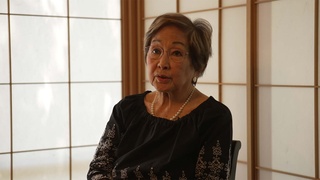Interviews
Speaking about his wife
To this date, I still think I did marry the most wonderful individual in my life. You know, all these years…she also lived in Japan for a while so she had a hard time in Japan and hardship and she came back. But when we got married and raised the kids…I’m a little bit on the quiet side and sometimes…a lot of times your wife does all the talking but…she does make sense in a lot of things. But in my family, I pretended to be…”I’m the boss” and then she took the back seat and it was 99 percent of the time whatever she does and she makes the right decision and then all the support that she gives me…we had a really difficult time during business-wise.
Date: June 17, 2008
Location: California, US
Interviewer: Janice Tanaka
Contributed by: Watase Media Arts Center, Japanese American National Museum











